How to Grow Cannabis Outdoors in Australia: Climate Zones, Legal Tips & Best Weed Strains
- Australia’s Climate Zones for Growing Weed Outdoors
- Cannabis Laws for Outdoor Growers
- How to Choose Seeds for Outdoor Growing
- Best Strains by Australian Climate Zone
- Where to Buy Outdoor Cannabis Seeds
- Essential Gear for Outdoor Weed Grows
- Outdoor Cannabis Season and Life Cycle
- Protecting Plants from Pests and Weather Cycle
- Outdoor vs Indoor Grows in Australia
- Pro Tips for Outdoor Cannabis Growing

Thinking of growing your own weed outdoors in Australia? You're in the right place. Whether you're in the tropical humid north, the dry red centre, or up in the cooler mountains, this guide's got you covered. We'll walk you through growing cannabis outdoors – from cracking open those cannabis seeds to trimming your very first sticky buds.
Introduction to Growing Cannabis Outdoors in Australia
No matter where you are, the Aussie climate throws a bit of everything at you, so knowing when to plant, which strain to choose, and how to deal with problems like pests and heatwaves can make all the difference. Never fear – we'll cover the tips and tools you'll need to keep your cannabis plants thriving in the great outdoors.
We’ll talk about how to pick a spot that maximizes sunlight, what kind of growing medium works best, and even how a simple greenhouse setup can help if things get too wild weather-wise. You’ll also get the lowdown on stuff like cloning, transplanting, pruning, and making sure your plants receive everything they need through the vegetative and flowering stages.
Whether you’re just getting started or already a bit of a grower, there’s something here for you. Think of this as your laid-back, no-BS roadmap to growing top-shelf pot in your own backyard.
Disclaimer: Cannabis cultivation laws vary by region. This information is intended for use only in areas where growing cannabis is legal. Please check your local laws before proceeding.
Understanding Australia’s Climate Zones for Outdoor Weed Growing

Alright, so let's talk about climate. If you want to grow cannabis outdoors in Australia, you have to match your cannabis plants with your postcode, because what will grow in Cairns might not work in Canberra.
According to the Australian Building Code Board, Australia is divided into eight zones of climate, and each has its own atmosphere. Located in the Southern Hemisphere, Australia experiences seasons opposite to those in Europe or North America – and with eight distinct climate zones, growing conditions can vary wildly from one region to another. Look at it this way: you're preparing yourself to head off for a bushwalk – you wouldn't proceed up the snow-capped top in thongs, and your marijuana crops feel the same about a storm.
Zone 1 – Tropical Climate: Hot, Humid, and Lush
If you’re up in the tropics – think Darwin, Cairns, and the steamy edges of Far North Queensland – timing is everything. The best window to get your seeds in the ground is late February to March, just after the monsoon rains calm down. Harvest usually rolls around between July and September, but if you’re feeling bold, you might squeeze in a cheeky autoflower run from October to December, just before the wet season crashes back in.
Pro tips:
- Humidity’s high airflow is your BFF. Prune those lower leaves.
- Mulch like a boss to keep roots cool and soil moist.
- Autos rock here, as they finish fast before the wet season crashes the party.
Zone 2 – Subtropical: Warm, Mild, and Rainy
If you’re growing around Brisbane or up on the northern Gold Coast, you’re in subtropical territory – warm, mild, and blessed with steady rains. The sweet spot for planting is March to April, when the weather starts to mellow. Come August or September, your harvest should be ready, and thanks to the mild winters, you might even manage a sneaky second run before spring kicks in.
Pro tips:
- Less insane rain than Zone 1, but still sticky – choose mould-resistant strains.
- Photoperiods love these steady autumn days; autos are great if you hate babysitting.
Zone 3 – Dry Heat: Sun-Intense and Low Humidity
If you're growing near Alice Springs or out in central WA, you're dealing with lots of hours of sunlight and bone-dry air. Aim to plant around September to October, before the mid-summer scorcher hits. By February or March, you’ll be harvesting under clear skies, provided your plants survive the brutal heat.
Pro tips:
- Water your plants smart: drip system or deep soak.
- Throw up some shade cloth for midday scorchers.
- Go for drought-proof genetics and sandy, fast-drain soils.
Zone 4 – Hot Days, Cool Nights: Managing Fluctuations
Places like Adelaide and inland NSW offer plenty of sun, but the temps can swing wildly between day and night. Get your plants in the ground by September to avoid the risk of frost. Harvest usually wraps up around January or February, just in time to beat the late-season chills.
Pro tips:
- Day-night swings can stress plants – choose hardy strains only.
- Use row covers when night temps start to dip.
- Dry air = less mould, so focus on windbreaks instead.
Zone 5 – Warm Temperate: Ideal for Most Outdoor Plants
From Sydney to Perth and along coastal SA, this zone is a dream for growers. The climate’s balanced, the sun’s steady, and conditions are perfect for a wide range of strains. Plant in October and expect a lush harvest around March or April.
Pro tips:
- Steady sun: photoperiods flourish under these predictable hours.
- Watch for random showers – mould resistance is key.
- Tie and train your ladies (LST/SCROG); they’ll stretch nicely.
Zone 6 – Mild Temperate: Balanced Rainfall and Seasons
Down in Melbourne or southern Tasmania, the weather’s fairly mild but still a little unpredictable. Your planting window runs from October to November, with harvest season hitting around March. Just be ready for late-season rains – they can sneak up on you.
Pro tips:
- Late rains can mess with buds – dry out the soil before the flowering period.
- A quick auto can dodge those surprise cold snaps.
- Toss in a greenhouse hoop for extra warmth.
Zone 7 – Cool Temperate: Short Growing Seasons
Growing around Hobart or southern VIC? You’ve got a narrow season to work with. Plant in November and expect to chop down by late February. Timing is everything here – one cold front too early, and your plants could be in trouble.
Pro tips:
- The short seasons mean you’ll need fast autos or photoperiods that finish early.
- Insulate pots or use root wraps to fend off chill.
- Bonus LED strips can bump up yields on gloomy days.
Zone 8 – Alpine Region: Cold and Windy Growing Challenges
If you’re brave enough to grow in the Snowy Mountains or highland TAS, hats off to you. This is Australia’s trickiest zone – cold, windy, and short. November is your only real shot to plant, and you’ve got until early February to harvest. That’s a tight 12-week window, so every day of a flowering phase counts.
Pro tips:
- Frost is a buzzkill – go autoflower under mini-greenhouses.
- Cold-hardy strains (Northern Lights Auto, Chemdog Fast) are must-haves.
- Keep plants low and snug against wind.
Cannabis Laws in Australia: What Outdoor Growers Should Know
That covers the weather – now let’s get legal. Below is a state-by-state guide to where growing cannabis is permitted, where penalties are lighter, and where laws remain especially strict.
Just a note: Due to recent order seizures in parts of Australia, our team has adjusted shipping methods and packaging to improve delivery success. We’re keeping a close eye on the situation to make sure your order gets to you as smoothly as possible.
Where It’s Legal to Grow Weed Outdoors
Right now, the Australian Capital Territory (ACT) is the only place in the country where outdoor cannabis cultivation is officially allowed, at least for personal use. Adults aged 18 and over can legally grow up to two plants per person, with a maximum of four plants per household. You're also allowed to possess up to 50 g of dry bud or 150 g of fresh cannabis.
That said, the rules come with caveats. You can’t sell, gift, or use cannabis in public, and federal laws still technically ban recreational use. So while the ACT is leading the way, there’s still a legal grey area to be aware of.
Areas with Decriminalized or Relaxed Laws
A few other states and territories aren't exactly "cool" with growing weed, but they’re not cracking down hard either, especially when it comes to personal possession.
In South Australia, growing is still illegal, but if you're caught with up to 100 g of cannabis or 20 g of resin, it usually just means a fine, not a criminal record.
The Northern Territory has similar vibes: cultivation is off the table, but possession of up to 50 g at home typically results in a fine (up to AU$200), not a court date.
In New South Wales, having up to 15 g could get you a caution or a fine, depending on the officer – again, it’s not legal, but usually not the end of the world either.
Meanwhile, in Victoria, while growing is illegal, possession of up to 50 g might just earn you a warning. There's talk of full decriminalization in the near future, so it’s a space to watch.
Where Outdoor Growing Is Still Restricted
In other parts of Australia, outdoor cultivation is still very much off-limits, and the penalties aren’t light.
Queensland takes a hardline stance. Any amount of cannabis can land you in serious trouble, with penalties of up to 20 years in prison for cultivation.
Western Australia isn’t quite as harsh but still strict. Possession of up to 10 g will get you enrolled in a mandatory intervention program – anything more brings down the legal hammer.
In Tasmania, even a small amount can lead to fines up to AU$7,950, while large-scale possession or cultivation could result in prison terms of up to 21 years.
Medical Cannabis Rules and Access in Australia
Medical cannabis requires a prescription in all Australian states and territories. However, access and procedures vary. In some states, like Queensland and Tasmania, the process can be more difficult due to a limited number of authorized prescribers.
Picking the Best Cannabis Seeds for Outdoor Growing in Australia
Selecting the right seed is akin to picking the perfect hiking partner – it needs to be suited to your terrain, your timetable, and the amount of work you're ready to invest. Start by asking yourself the following:
- Climate match: Is this strain compatible with heat, humidity, frost, or drought?
- Grow window: What’s the duration of your growing season, from last frost (or first substantial rains) to first frost?
- Flowering type: Would you like a quick, set-and-forget auto or a photoperiod where you can control the veg time?
- Resistance & resilience: Look for mould-resistant, bug-tolerant genetics if insects or humidity are your nightmares.
- Yields vs. effort: High-yielding photoperiods might demand more pruning and babysitting; stubborn autos are more low-maintenance.
Choose wrong, and you'll be left with dead‑looking plants in the Australian sun or mouldy buds in the tropics. Choose right, and you'll be high‑fiving yourself come harvest time.
Autoflowers vs. Photoperiods – Which to Grow Outdoors
Autoflowering strains are the go-to for growers dealing with tight schedules, unpredictable weather, or space limitations.
- Pros: Fast lifecycle (typically 8-10 weeks), no light-schedule modifications, perfect for short seasons or stealth grows.
- Cons: Slightly less yields, less control of veg time, sometimes lower THC potential.
Photoperiod strains are the traditional choice for outdoor growers chasing maximum yields and control of plants outside, assuming you’ve got the time and conditions to support them.
- Pros: Greater yields, more potency options, full control of vegetative growth for organizing your canopy.
- Cons: Need a strict light schedule (12/12), longer overall grow duration (12-16+ weeks), risk of early flowering if daylight decreases too early.
Bottom line: If you’re racing against frost or monsoons, grab an autoflower. If you’ve got a long, stable season and crave top‑shelf yields, photoperiod is your jam.
Best Cannabis Strains for Australia’s Outdoor Conditions
Australia’s vast and diverse climate zones – from hot and humid tropics to cool alpine regions – make choosing the right cannabis strain for outdoor cultivation especially important. The success of an outdoor crop depends on a match between a plant's inherent resilience and your local climatic conditions, from daytime temperature variations and humidity to the sun strength and length of the growing season.
Below are 10 of the top cannabis strains to cultivate outdoors throughout Australia – a carefully curated selection for every major outdoor climate region. Each is a blend of genetics, a blend of autoflowers and photoperiod strains, and a compromise between performance and consistency. Most are developed by well-respected growers like Herbies Seeds, Fast Buds, EGS, and Barney's Farm, supplemented by some solid international seed banks.
Want to explore more? Check out our collections for hot climate, cold climate, autoflower strains, and high-yielders.
Top Cannabis Strains to Grow in Each Australian Climate Zone
We've listed our top picks from the hottest tropics through to the chilliest alpine elevations so you can skip the chit-chat and get straight to procuring the right seed for your local garden. Starting in Zone 1's balmy summers and finishing in Zone 8's frozen highlands, the following are the strains that'll have you harvesting like a pro.
Godzilla Cookies Auto – Top Performer in Hot & Humid Conditions (Zone 1)


- Autoflowering
- 450 - 600 g/m² indoors
- Hours of belly laughs
Godzilla Cookies Auto adores hot and humid conditions because of its mould resistance and fast flowering time. As an autoflower, it skirts the risks of high humidity exposure during flowering.
Mimosa Shot – Reliable Choice for Tropical Climates (Zone 1)
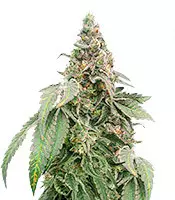

- Photoperiod
- 700 g/m² indoors
600 - 800 g/plant outdoors - Unapologetic glee
With a strong Sativa-based structure, Mimosa Shot is heat-resistant and finishes flowering quickly, reducing the risk of mould. With an open structure, it allows for sufficient air circulation in humid climates.
Auto Purple – Great Fit for Warm and Mild Conditions (Zone 2)
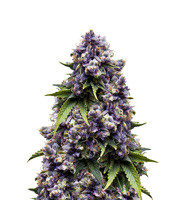

- Autoflowering
- Morpheus' hug
- 400 g/m² indoors
80 g/plant outdoors
Auto Purple is ideal for warm, humid climates due to its compact size and fast life cycle. It's famous for resisting humidity issues like bud rot, so it's reliable in subtropical regions.
Strawberry Gorilla Auto – Best for Dry Heat and Intense Sun (Zone 3)
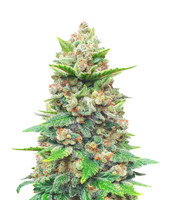
- Autoflowering
- 450 - 600 g/m² indoors
60 - 300 g/plant outdoors - Happiness intoxication
Strawberry Gorilla Auto handles extreme sunlight and dryness very well. It’s robust in its genetics, so it does well with minimal watering and is thus a good choice for hot, dry, Mediterranean-type climates.
Alpha 21 – Suited for Hot Days and Cool Nights (Zone 4)
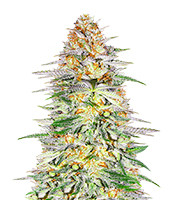

- Photoperiod
- Knockout strong medicine
- 600 g/m² indoors
600 - 800 g/plant outdoors
Alpha 21 possesses hardy, hybrid genetics that ensure both heat and cold tolerance. It’s a fast-flowering, drought-tolerant strain ideal for areas with hot daytime and chilly nighttime temperatures late in the season.
Apple Betty – Thrives in Balanced Temperate Climates (Zone 5)
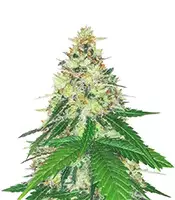

- Photoperiod
- Sugary psychedelia
- 600 - 800 g/m² indoors
2300 - 2600 g/plant outdoors
Due to its balanced Indica-Sativa genetics and moderate flowering time, Apple Betty is a good match for temperate climates. It develops steadily over the course of a standard growing season without excessive heat or cold.
Shiskaberry – Dependable Grow in Mild Temperate Conditions (Zone 6)


- Photoperiod
- Complete harmony
- 600 - 700 g/m² indoors
1500 - 2000 g/plant outdoors
Shiskaberry performs well in mild climates because of its compact structure and reasonable mould resistance. It’s resilient enough to handle cold nights while still putting out firm, quality buds.
Big Bud Autoflower – Consistent Yields in Cool Climates (Zone 7)
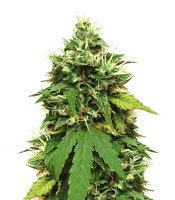

- Autoflowering
- 550 g/m² indoors
- Joy and amusement
Big Bud Autoflower is ideal for short, cold summers. Its autoflowering genetics ensure a fast harvest before the arrival of cooler fall weather, and its compact buds mature even in falling temperatures and light.
Chemdog Fast Version – Handles Harsh Alpine Weather Well (Zone 8)
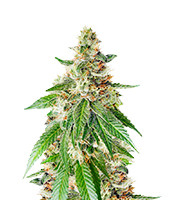
- Photoperiod
- 550 - 650 g/m² indoors
550 - 650 g/plant outdoors - Happy relaxation
Chemdog Fast Version is perfect for short seasons in Tasmania or the Australian Alps. Thanks to its rapid flowering time, it can be harvested before alpine frost starts to set in.
Northern Lights 10 of 10 – Cold-Resistant Pick for Mountain Zones (Zone 8)
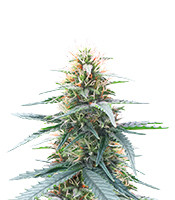
- Photoperiod
- Dreamlike calm
- 500 - 600 g/m² indoors
700 - 800 g/plant outdoors
One of the most cold-resistant autoflowers available, Northern Lights 10 of 10 handles high elevation and low temperatures like a champ. It's a great choice for mountainous regions with short summers.
Where to Buy Cannabis Seeds for Outdoor Growing
Alright, so you've picked your strains and mapped out your grow – now comes the million-dollar question: how do you actually obtain the seeds?
If you're in Aus, you'll know it's not a case of clicking "buy now" and waiting a week or two. Customs can become tricky, postage is slow, and not all seed banks are up for it. But don't worry – here's how you can get it done.
Tips for Ordering Cannabis Seeds in Australia Legally
Growing cannabis in Australia comes with its challenges, from strict import rules to unpredictable climate zones. However, with the right seed bank and a few smart tactics, it’s completely doable. That’s where Herbies Seeds comes in.
We’ve been shipping cannabis seeds to Australia for years, and we know exactly what it takes to do it discreetly, safely, and with full support. Here’s how to make it smooth:
Stealth Is Your Best Friend
Always choose discreet shipping – and with Herbies, you don’t even have to think about it. It’s our default. No logos. No suspicious packaging. Just safe delivery, plain and simple.
Order Small Batches
Smaller orders mean less risk, and if customs decides to be nosy, it’s easier to replace. Speaking of which...
Lost in the Post? We’ve Got You
If your tracking stops updating or your seeds don’t show up, let us know. We offer delivery guarantees, so you can relax while we sort it out.
Germination Didn’t Go to Plan?
We’re growers too – we get it. If your seeds don’t sprout, reach out within 90 days, send us a photo and a quick note, and we’ll either replace the seeds or troubleshoot with you to get things back on track.
By the way, through Herbies, you can order seeds from trusted global brands like Fast Buds, Barney’s Farm, Original Sensible Seeds, AlphaFem, and more – all in one place, all with the same stealth shipping and support.
So while growing in Australia might not be the easiest, it’s absolutely achievable – especially when you’ve got a reliable seed bank like Herbies on your side.
Essential Equipment for Growing Weed Outdoors

What equipment and materials will you require to successfully grow weed in your backyard or garden? In our guide How To Grow Marijuana Properly, we walk you through timing and basic setup; here's a quick rundown of each of the essentials, with links to our detailed investigations.
Soil, Pots, and Drainage: Getting Your Growing Medium Right
Choosing the right pot and potting medium is your beginning. Use a 15-20 L (4-5 gal) pot so roots have space to grow out, along with a light, loose medium – coco or soilless mixes with perlite added – to prevent waterlogging. Adequate drainage not only keeps roots healthy but also guards against root rot and other fungal infections. (See Growing Cannabis in Pots, Soil, or Grow Bags: What to Choose? for more.)
Greenhouses & Plant Protection for Harsh Climates
While a direct‑sun set‑up can be stunning, unpredictable Aussie weather often requires a backup. A simple polytunnel or DIY PVC hoop frame protects from heavy rain and searing sun alike, and if you want round-the-clock peace of mind, a full glass or polycarbonate greenhouse lets you control temperature and humidity. Our Greenhouse Cannabis Growing Tips cover every option in detail.
Choosing the Right Fertilizer for Outdoor Cannabis Plants
Your crop's nutrition is a marathon, not a sprint – it takes a season. In the vegetative phase, use a high‑nitrogen blend (about 3‑1‑2 NPK) every two weeks to fuel leafy growth; transition to a bloom‑boosting formula (about 1‑3‑2 NPK) when pistils are visible to add on those buds. Organic compounds like bat guano or seaweed meal offer calming, slow-release nutrients that complement Australia's unpredictable soils well. Check out our 5 Best Fertilizers For Growing Cannabis for more details.
Outdoor Cannabis Growing Season and Life Cycle
Step by step, from seedling to flower – here’s how long each stage takes and what to watch for at each turn.
Germination and Early Seedling Care
Your garden’s story begins when the seed cracks open, usually within 3-10 days. Keep humidity high (70-80%) under a gentle light and transplant into larger pots once the first true leaves appear. If you’re working from clones, treat them as mature seedlings – higher light and a controlled environment help them root quickly. (Check How To Quickly And Successfully Germinate Cannabis Seeds.)
Vegetative Phase – Maximize Natural Sunlight
After transplant, plants require 18-24 hours of daylight. This is your window for shaping: low‑stress training, topping, or a SCROG net can turn a bushy plant into a high‑yielding canopy. Watch daily for new growth and adjust supports as needed – you want even light distribution for fat, uniform colas. Dive deeper into methods with our article The Vegetative Stage: Everything There Is To Know About It.
Flowering Stage – When Buds Start to Develop
When days shorten to about 12 hours light/12 hours dark, your plants become serious. During weeks 1-2, you'll notice the initial pistils; within the subsequent 8-12 weeks (depending on the strain), those lavish hairs turn into hard buds. Watch for trichomes – milky white equals peak THC, while amber points towards sedative effects. Want more information? Check out our guide: All You Need To Know About Flowering Cannabis Plants.
When and How to Harvest Your Outdoor Cannabis
Outside, from flip to harvest, it may be 8-12 weeks, but this can vary based on the strain and regional climate. Harvest too early and lose maximum potency; harvest too late and risk spoilage. Check trichomes with a loupe, then dry and cure slowly. For more advanced harvesting guidance, visit When Is The Best Time To Harvest Your Cannabis Plants?
Protecting Outdoor Cannabis Plants from Pests and Weather
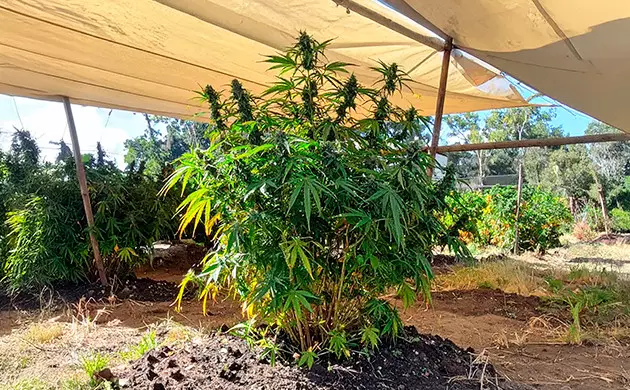
Nature will be both your best friend and your worst enemy. Here's how to tip the dice in your favour.
Common Garden Pests and Beneficial Insects
Sap-sucking aphids, chewing caterpillars, and stealthy spider mites are just a few of the pests that will test your garden's defences. Before reaching for chemical sprays, invite beneficials – ladybugs, lacewings, and predatory wasps – to guard your leaves.
Wind, Rain, and Heat – How to Protect Your Plants Outdoor
Australia's climatic extremes need planning. Shade cloths or sails temper blistering midday sun, rain domes and pots with good drainage avert root drowning during downpours, and hard stakes or windbreak fences anchor plants in the face of gale-force winds.
Outdoor vs. Indoor Cannabis Grows in Australia
Although the basic principles of growing cannabis are universal, the Australian climate has its peculiarities. The following is a brief rundown of the main differences and some advice for Australian growers.
Yield, Bud Quality, and Growing Conditions Compared
Outdoor plants get taller and heavier with unlimited sunlight and room to roam. With Australia's long summer days, outdoor grows can produce dank colas, but you're at the mercy of weather extremes. Plants indoors offer year-round consistency and the ability to exactly regulate light, temperature, and humidity for maximum potency and terpene profiles.
Setup Costs, Light Access, and Environmental Control
An outdoor venture requires minimal infrastructure: decent earth or pots, regular nutrients, and perhaps a low-tech polytunnel. Indoor grows require investment in lights, ventilation, and environmental controls, which translate into higher initial outlay but guaranteed returns, winter notwithstanding, or in cooler climates like Tasmania and the Victorian highlands.
Pests, Weather Risks, and How They Differ
Outdoors, you’ll contend with everything from bud‑rot in humid tropical zones (think Queensland) to sun scorch or dry‑spell stress in arid interiors. Strategic site selection – choosing sheltered spots and rotating crops – helps. Indoors, pests and mould can still appear, but sealed rooms and HEPA filters keep most invaders at bay.
Expert Growing Tips for Outdoor Cannabis Growers
Even seasoned growers have hiccups now and then. These pro tips will strengthen your equipment and optimize every sun-drenched hour.
Get Your Soil Ready Months in Advance
Till garden beds using compost, worm castings, and dolomite lime before planting. Soils in Australia may be as extreme as extreme – prep them in advance to ensure well-adjusted pH and healthy microbiology upon seedling arrival.
Use Shade Cloth Intelligently
Afternoon sunburn in areas 1-3 can zap leaves. A 30-50% shade cloth hung from noon until 3 pm over your canopy retains temps without sacrificing yields.
Rotate and Train for Even Canopy
Pair LST (low-stress training) with pot rotation weekly so all bud spots receive the same amount of sun. It encourages even colas and prevents "lollipopping" where lower nodes dry out.
Build a Rainwater Harvesting System
Droughts are intense in the Outback. Simple barrel and guttering deliver filtered rainwater teeming with trace minerals – ideal for flushing and reducing tap‑water buildup of salts.
Scout for Pests Early and Weekly
Aphids, thrips, and spider mites breed rapidly on warm days. Inspect under leaves and branch nodes and consider incorporating predatory mites or neem oil as a weekly deterrent.
FAQ – Growing Cannabis Outdoors in Australia
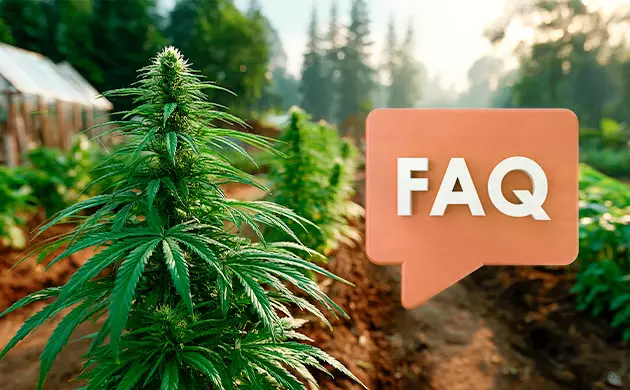
Why Is My Plant Tall and Skinny Outdoors?
Lanky, tall growth indicates too little light or Sativa-biased genetics. Plants will stretch to reach sunlight outdoors – give at least 6-8 hours of direct sunlight and use low‑stress training (LST) to create a bushier canopy and more robust lateral branches.
How Many Hours of Direct Sunlight Do Outdoor Plants Need?
Cannabis does well with 6-10 hours of direct sunlight per day. In extreme areas, early morning light is less intense – orient plants east-facing if possible and employ 30% shade cloth in the hottest afternoon sun to avoid heat stress.
How Often Should I Water and Fertilize My Cannabis?
In hot Australian climates, water plants every 2-3 days, adjusting for rain and pot size. Mist young seedlings daily, but not until waterlogged. Feed veg-stage plants a high-nitrogen fertilizer biweekly, then bloom food every 10-14 days after buds have formed – always with a flush of plain water afterward to prevent nutrient lockout.
Final Thoughts – Start Growing High-Quality Weed Outdoors in Australia
To wrap it all up, growing cannabis outdoors in Australia is equal parts art and science. You’ve learned how to match strains to your zone, set up the right pots and structures, feed and train your plants, and stay one step ahead of pests and extreme weather. Whether you’re chasing colossal outdoor yields under the Tropic of Capricorn or scheming a stealthy alpine autoflower harvest, the keys are preparation, observation, and the right genetics.
Now it's your turn: grab your seed pack, choose a strain that will suit your climate, and get growing. If you found this guide useful, leave us a comment below with your number one tip or question, share this post with your grow buddy, and save it for your next garden plan. We'd also love to see your progress – take a photo of your plants on Instagram, tag @herbies_shop, or email us at [email protected].
Happy growing, and may your harvest be plentiful!
Herbies Head Shop expressly refuses to support the use, production, or supply of illegal substances. For more details read our Legal Disclaimer.






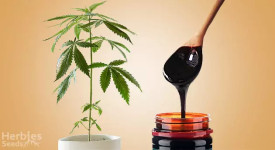
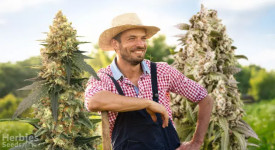
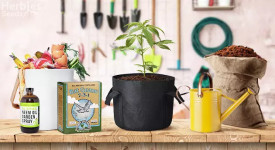

Thank you for leaving a comment for us!
Your feedback will be posted shortly after our moderator checks it.
Please note that we don’t publish reviews that: